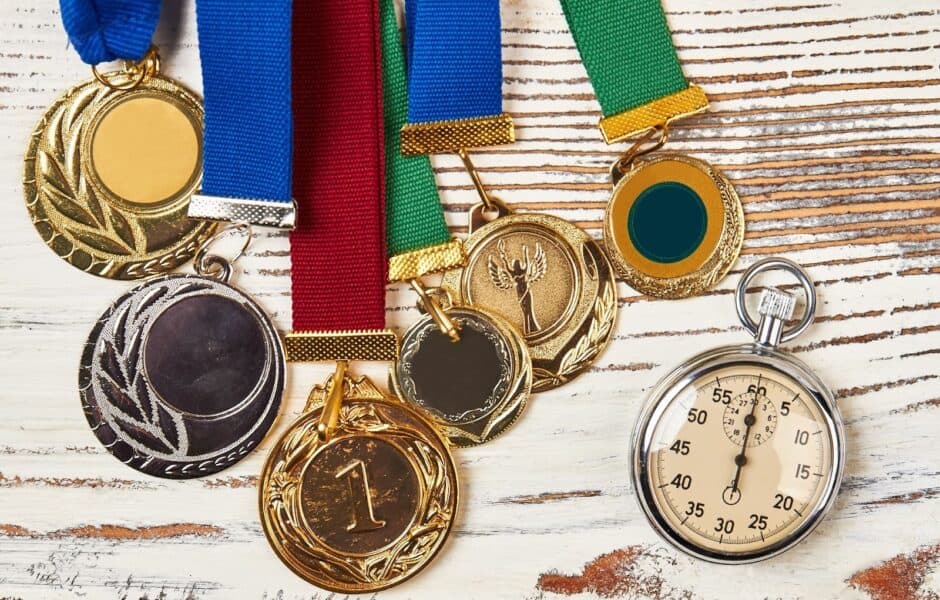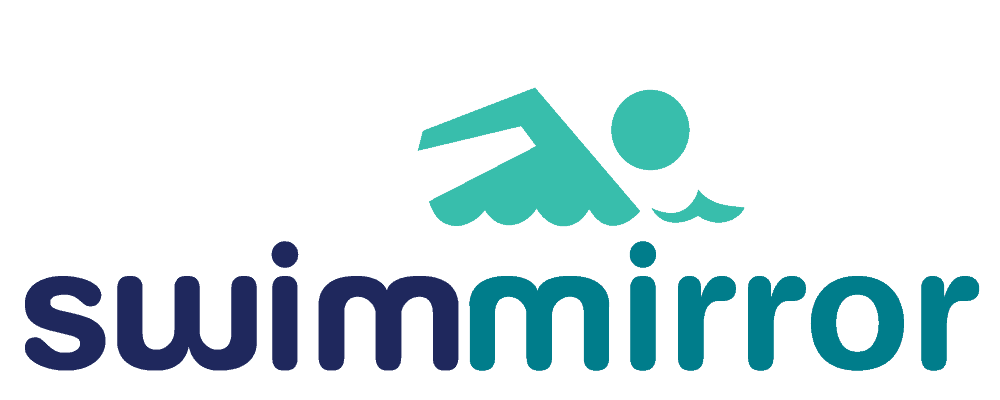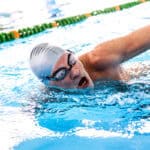Professional Swimmer Qualifications: Your Step-By-Step Path To Success

Did you know that Olympic swim teams consist of only 26 men and 26 women out of all professional swimmer qualifications in a country?
That’s an incredibly selective group! Most Olympic swimmers begin their journey as early as 5 or 6 years old, dedicating themselves to a rigorous lifestyle most people can hardly imagine. These elite athletes typically train five hours daily for three days a week and two to three hours for the remaining four days, often practicing twice daily.
For aspiring competitive swimmers, understanding the path from beginner to professional status is crucial. The journey involves mastering technical skills, building extraordinary stamina, and navigating a highly competitive environment. Additionally, many pro swimmers supplement their water training with cross-training activities like yoga, pilates, or cycling.
The road to becoming a professional swimmer requires more than just natural talent. Consistent practice helps create strong muscle memory, develop proper techniques, build endurance, and boost confidence in the water. From local swim meets to national trials, swimmers must prove themselves repeatedly, gradually working their way up the competitive ladder.
This article outlines the step-by-step qualifications needed to transform from an enthusiastic swimmer to a professional athlete. Whether aiming for Olympic glory or professional success in swimming, understanding these essential requirements will help navigate this challenging but rewarding career path.
Master the Core Skills and Join a Swim Team
The foundation of every professional swimming career begins with mastering essential techniques. Professional swimmer qualifications start with perfecting the four competitive strokes: freestyle, backstroke, breaststroke, and butterfly. Each stroke requires specific skills and precise execution to achieve maximum efficiency in the water.
Proper breathing technique stands as perhaps the most crucial skill for aspiring professional swimmers. Many beginners struggle with breath control, often lifting their heads completely out of water and disrupting their rhythm. Instead, swimmers should establish a constant rhythm of slow exhalation through the nose and mouth when underwater, turning the head to the side for inhalation during freestyle. This technique prevents gulping water and maintains streamlined body position.
Body alignment represents another fundamental aspect of professional swimming. Maintaining a “tall” position in the water—with a taut line from fingertips to toes—engages the powerful latissimus dorsi muscles for a stronger pull. Proper head positioning, with eyes looking down and water cutting across the middle of the head, helps keep hips high and reduces drag.
Joining a competitive swim team offers numerous benefits beyond skill development. Swim teams enhance water safety, build confidence, and improve concentration levels. Furthermore, studies show swimmers tend to be more academically advanced than their peers, with research finding that regular swimming exercise actually changes the brain to improve memory and thinking skills.
Swim teams uniquely combine individual achievement with teamwork skills. While swimmers set personal goals, they simultaneously learn to support teammates—an essential professional swimmer qualification. This environment teaches self-motivation, goal-setting, and resilience when facing challenges.
Time management becomes second nature for competitive swimmers who balance training, academics, and other responsibilities. This skill transfers directly to professional swimming careers, where efficiency both in and out of the pool determines success. Consequently, the discipline gained through swim team participation prepares athletes for the demands of professional competition, making it an essential stepping stone toward a swimming career.
Develop a Pro-Level Training and Lifestyle Routine
Elite swimmers train more intensely than athletes in most other sports, with multiple daily sessions that push physical and mental boundaries. Professional swimmer qualifications require extraordinary commitment to a structured routine that encompasses every aspect of life.
Most competitive swimmers complete 4-8 morning practices weekly, typically beginning at 5 am for high school swimmers and 6-7 am for collegiate and professional athletes. Their daily regimen includes not just swimming but also strength training, recovery protocols, and precise nutrition planning. Olympic champion Michael Phelps, for example, swam approximately 13 kilometers daily, six or seven days per week—totaling at least 80,000 meters weekly.
Nutrition forms a cornerstone of professional swimming success. Elite swimmers burn thousands of calories daily and must replenish accordingly. While regular adults need about 2,000-2,500 calories daily, professional swimmers consume significantly more—Michael Phelps famously ate between 8,000-10,000 calories daily during competition periods. This diet should include balanced ratios of protein (essential for muscle repair), carbohydrates (primary energy source), and healthy fats (necessary for overall health).
Recovery becomes equally vital as training itself. Professional swimmers prioritize sleep as their primary recovery tool—Olympic gold medalist Nathan Adrian reports sleeping 10-12 hours daily during training camps. Moreover, techniques such as ice baths, regular stretching, and massage therapy accelerate muscle recovery between sessions.
Mental conditioning separates good swimmers from champions. Elite swimmers approach practice with laser focus, viewing each session as an opportunity for improvement. As Olympic champion Caeleb Dressel notes, “I come to practice every day with the mindset that I’m there to get better”. They also embrace failure as a learning opportunity—Summer Sanders credits failing to make the 1988 Olympic team as the catalyst for her gold medal success in 1992.
Balancing this demanding schedule with other responsibilities requires exceptional time management. Successful swimmers often maintain detailed practice logs to track progress, set specific goals for each training session, and create structured weekly schedules that accommodate academic or professional obligations.
Advance Through Competitions and Build Your Career
Building a successful swimming career requires strategic participation in competitions of increasing prestige and difficulty. Competitive swimmers must systematically progress through local, regional, and national meets before reaching international competitions. This advancement helps develop experience handling race-day pressure while establishing benchmarks for improvement.
High school swimming typically serves as the entry point into competitive swimming, where aspiring professionals begin building their reputation or “personal brand”. Subsequently, collegiate swimming becomes a critical make-or-break phase—many swimmers plateau here as gains become more difficult and the sport increasingly demanding.
Fewer than half of adult swimmers participate in competitions, yet for those pursuing professional status, these events are essential milestones. Throughout the United States, over 400 local, regional, and national competitions occur annually, providing ample opportunities to gain exposure and attract sponsors.
Sponsorships play a vital role in a professional swimmer’s career, helping cover mounting expenses including competition fees, swimming gear, high-calorie diets, and travel costs. As swimmers advance through competitive ranks, expenses increase while available sponsorships decrease, creating greater competition among athletes.
For Olympic aspirations, swimmers must first qualify for national trials through qualifying times at national-level competitions or approved international meets. The U.S. Olympic Team Trials represent a particularly challenging hurdle—many athletes consider this competition more difficult than the Olympics themselves. From over 900 qualifying swimmers (representing the top 0.2% of America’s 325,000 swimmers), only 26 men and 26 women ultimately make the Olympic team.
Throughout this journey, networking within the swimming community becomes invaluable. Attending swim camps, clinics, and events helps connect with coaches, scouts, and fellow swimmers, potentially opening advancement opportunities. Building these professional relationships, combined with consistent improvement and competitive success, forms the foundation of a sustainable swimming career.
Conclusion
Becoming a professional swimmer demands extraordinary dedication, precise technical skill, and unwavering mental fortitude. Professional swimmer qualifications extend far beyond natural talent, requiring years of consistent training that typically begins during childhood. Athletes must master all four competitive strokes while developing proper breathing techniques and maintaining optimal body alignment in the water.
Competitive swim teams provide essential foundations for aspiring professionals. These environments foster not only technical excellence but also critical life skills including time management, teamwork, and self-discipline. Subsequently, swimmers must embrace increasingly rigorous training schedules that often include multiple daily sessions, carefully planned nutrition, and dedicated recovery protocols.
The path toward professional status follows a clear progression through competitive levels. Swimmers advance from local meets to regional competitions, then to national trials, with each step narrowing the field of competitors. This journey requires significant financial investment, making sponsorships crucial for long-term career sustainability.
Most importantly, professional swimming demands complete lifestyle commitment. Elite athletes balance extraordinary physical demands with mental conditioning techniques while managing the pressures of competition. Though extremely challenging, this path offers remarkable rewards for those willing to dedicate themselves fully to the sport.
Aspiring swimmers should therefore approach their development systematically. First, they must perfect fundamental techniques under qualified coaching. Next, they should establish progressively demanding training routines while maintaining proper nutrition and recovery habits. Finally, they must strategically participate in competitions that showcase their abilities to potential sponsors and teams.
The exclusive nature of professional swimming—evidenced by the mere 52 swimmers who make Olympic teams—underscores both its difficulty and prestige. Those who successfully navigate this demanding qualification process join an elite group of athletes who represent the pinnacle of swimming achievement, having transformed natural ability into professional excellence through years of deliberate practice and unwavering commitment.
FAQs
Q1. What are the essential steps to becoming a professional swimmer? Becoming a professional swimmer requires mastering core skills, joining a competitive swim team, developing a rigorous training routine, and advancing through various levels of competitions. It’s a long-term commitment that typically starts at a young age and involves perfecting stroke techniques, building endurance, and maintaining a disciplined lifestyle.
Q2. How do professional swimmers maintain their fitness and performance? Professional swimmers follow an intense training regimen that includes multiple daily swimming sessions, strength training, and cross-training activities. They also prioritize proper nutrition, consuming a high-calorie diet to fuel their workouts, and focus on adequate recovery through techniques like ice baths, stretching, and getting ample sleep.
Q3. What qualifications are needed to compete at the Olympic level in swimming? To qualify for the Olympics, swimmers must achieve specific time standards known as Olympic “A” or “B” cuts at national-level competitions or approved international meets. They must then compete in their country’s Olympic trials, where only a small number of top performers are selected for the national team.
Q4. How do aspiring swimmers balance their training with other life commitments? Balancing swimming with other commitments requires exceptional time management skills. Swimmers often maintain detailed schedules, prioritizing their training while accommodating academic or professional obligations. Many start their day with early morning practices and structure their remaining time efficiently to meet all their responsibilities.
Q5. What role do sponsorships play in a professional swimmer’s career? Sponsorships are crucial for professional swimmers, helping to cover expenses such as competition fees, equipment, travel costs, and high-calorie diets. As swimmers advance in their careers, attracting sponsors becomes increasingly important and competitive. Building a strong personal brand through consistent performance and networking within the swimming community can help attract sponsorship opportunities.





Write a Reply or Comment